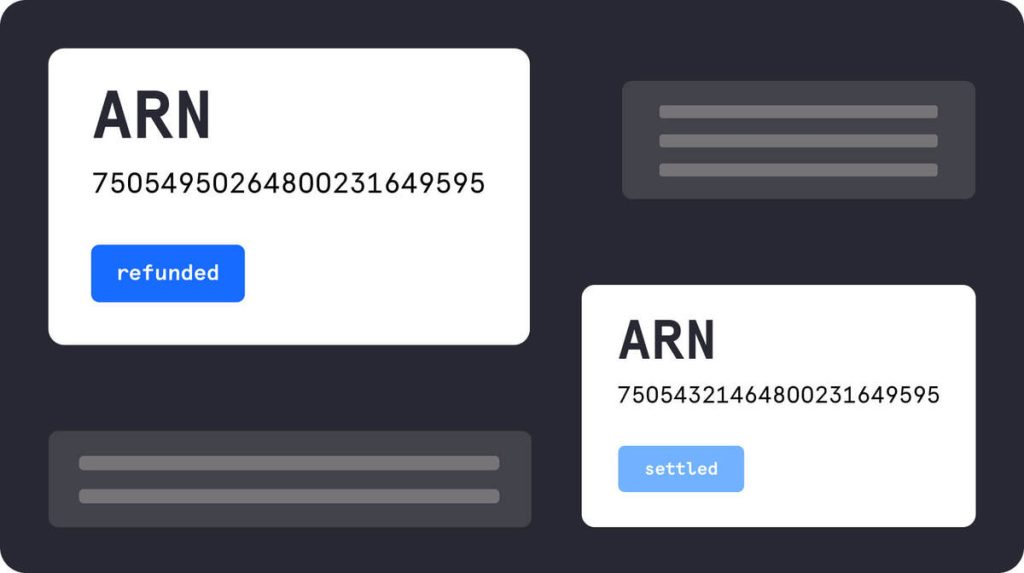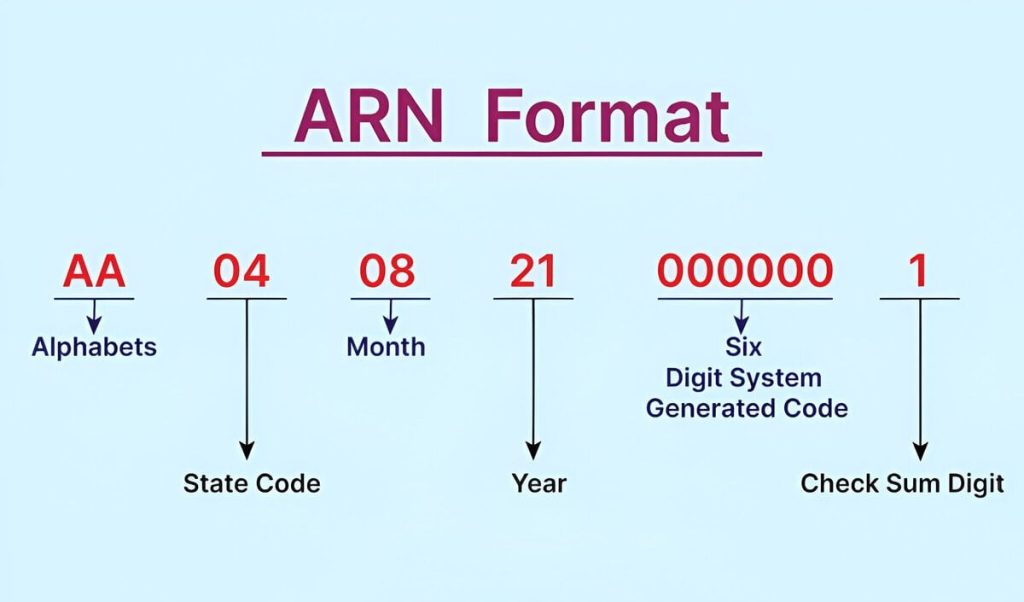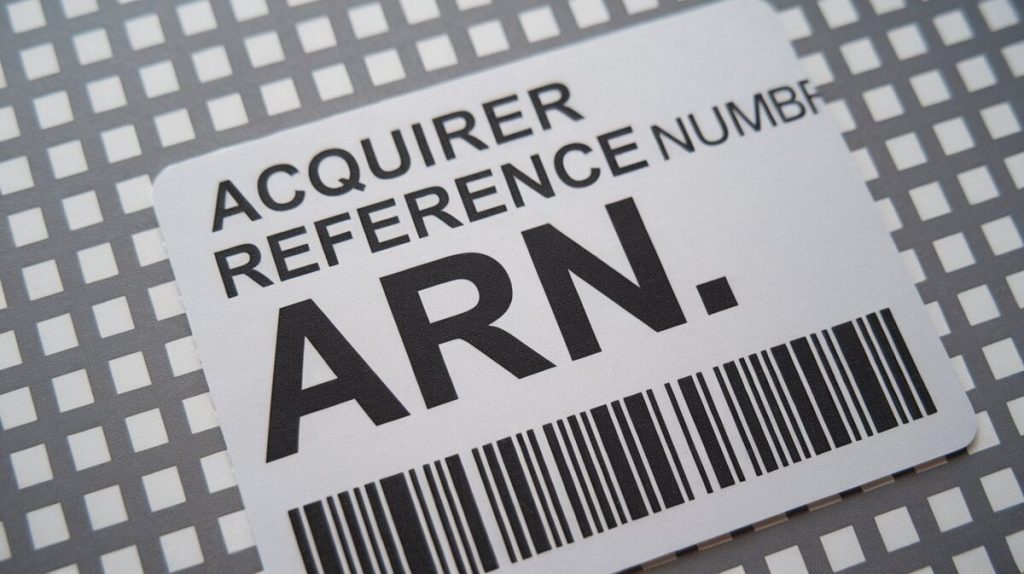The Acquirer Reference Number (ARN) is a critical identifier in online transactions. As the digital world expands, being able to track and trace payment movements is essential for businesses and customers. This article breaks down ARN, its importance in processing payments, and its role in fraud prevention and dispute resolution.
What is an Acquirer Reference Number (ARN)?
An Acquirer Reference Number (ARN) is a unique identifier assigned to each transaction processed by an acquiring bank. It enables merchants, customers, and banks to trace the movement of funds through payment networks, primarily for Visa and Mastercard transactions. ARNs are used to track refunds, monitor transactions, and assist in resolving disputes.
An ARN acts like a transaction “fingerprint,” tracking the movement of a payment from the merchant’s bank (acquiring bank) to the cardholder’s bank (issuing bank). This ensures that all parties involved can monitor the progress of a payment and trace any issues that may arise.
Why ARN is Important
ARNs are crucial for maintaining the integrity of online transactions. Their importance lies in three main areas:
- Refund Tracking: When a customer requests a refund, the ARN helps trace the status of that refund. Merchants can use this number to track when the refund is processed and transferred to the customer’s account.
- Dispute Resolution: In case of disputes, such as chargebacks, the ARN provides a transaction trail that banks use to resolve the issue. This makes the process faster and more transparent.
- Fraud Prevention: Since the ARN tracks every transaction, it helps prevent fraud by enabling financial institutions to verify the legitimacy of payments. By analyzing the transaction path, fraud can be identified more effectively.
Table 1: ARN Functionality Across Payment Processors
| Payment Processor | ARN Utilization | Key Features | Refund Tracking Time |
|---|---|---|---|
| Visa | Yes | Tracks refunds and disputes | 5-10 business days |
| Mastercard | Yes | Tracks transaction and settlement | 7-14 business days |
| Stripe | Yes | Easy access to ARN via dashboard | 24-hour updates |
| Adyen | Yes | ARN available for Visa and Mastercard transactions | 7-10 business days |
| Braintree | Yes | Real-time transaction tracking | Instant updates |

ARN Benefits for Merchants and Customers
- Merchants use ARNs to track the status of refunds and resolve disputes efficiently. Having an ARN ensures they can monitor the transaction flow and avoid delays in customer service.
- Customers can request the ARN from merchants to track the progress of refunds. They can present this number to their bank for quicker resolution of issues such as delayed refunds.
In addition to tracking refunds and resolving disputes, ARNs are crucial for minimizing chargeback risks. For example, Merchanto.org, an official partner of Visa and Mastercard, specializes in preventing chargebacks. Merchants using Merchanto services can better manage their transactions and reduce chargebacks. Learn more about Merchanto here.
Use Cases of ARN in Payment Processing
ARNs serve multiple purposes across various transaction types:
- Refund Tracking: When a refund is initiated, the ARN helps merchants track its progress through the payment network, ensuring it reaches the customer. Refunds can take several business days to process, and the ARN provides transparency during this period.
- Partial Settlements: When a transaction involves multiple payments or partial refunds, the ARN ensures that each stage is traceable.
- Electronic Funds Transfer (EFT): ARNs are essential in EFTs, where funds are moved between banks. The ARN tracks the status of these transfers, reducing uncertainty for both merchants and customers.
Table 2: Use Cases for ARN
| Use Case | Description | Importance |
|---|---|---|
| Refund Tracking | Monitors the progress of refunds | Ensures transparency |
| Partial Settlements | Tracks installment payments | Simplifies complex transactions |
| Dispute Resolution | Helps resolve chargebacks | Shortens dispute resolution time |
| Fraud Detection | Identifies unauthorized transactions | Prevents financial losses |
ARNs are used widely across different payment platforms like Stripe, Adyen, and Braintree to improve transparency. For example, Stripe merchants can find the ARN in their transaction dashboard, giving them real-time access to transaction statuses and facilitating quick resolutions.

How to Find and Use ARN
Merchants can easily access ARNs via their payment processor’s dashboard. Here’s how they can locate and use the ARN for tracking purposes:
- Accessing ARN on Adyen: Merchants can log into Adyen’s dashboard, navigate to the “Transactions” section, and find the ARN under “Payment Events”.
- Tracking Refunds with Stripe: Stripe provides a detailed transaction history, including the ARN, which allows merchants to track refund statuses and assist customers with queries.
If a customer needs information on their refund, the merchant can share the ARN, which the customer can use to track the refund with their bank.
Table 3: ARN Statuses and Their Meanings
| Status | Meaning | Action Required |
|---|---|---|
| Not Available | Refund processed before charge | No further action needed |
| Processing | Refund or chargeback in progress | Wait for completion |
| Available | ARN ready for tracking | Contact bank with ARN |
In case of delays, customers can use the ARN to expedite their communication with the bank, reducing waiting times for refunds.
Fraud Prevention with ARN
Online fraud continues to rise, with $32 billion in global losses reported in 2023. ARNs are a vital tool in combating this issue. By tracking each transaction, ARNs provide a clear path that can be analyzed for suspicious behavior, allowing banks to act swiftly in identifying fraudulent activity.
Chargebacks are another significant risk for merchants, costing businesses $125 billion annually. Providing an ARN during a chargeback dispute can prevent unnecessary losses by proving that a transaction was legitimate.
Conclusion: The Value of ARN in Digital Transactions
In the world of digital commerce, the Acquirer Reference Number (ARN) is indispensable. It ensures transparency in transactions, tracks refunds, and simplifies dispute resolution. For businesses, utilizing ARNs can enhance customer trust and reduce financial risks.
Understanding and using ARN allows both businesses and customers to navigate the complexities of online transactions with greater confidence and security.
This streamlined article focuses on factual information, eliminating unnecessary adjectives and adverbs to maintain clarity. The structured use of tables and straightforward language provides valuable insight into the function and importance of ARNs in digital transactions.



